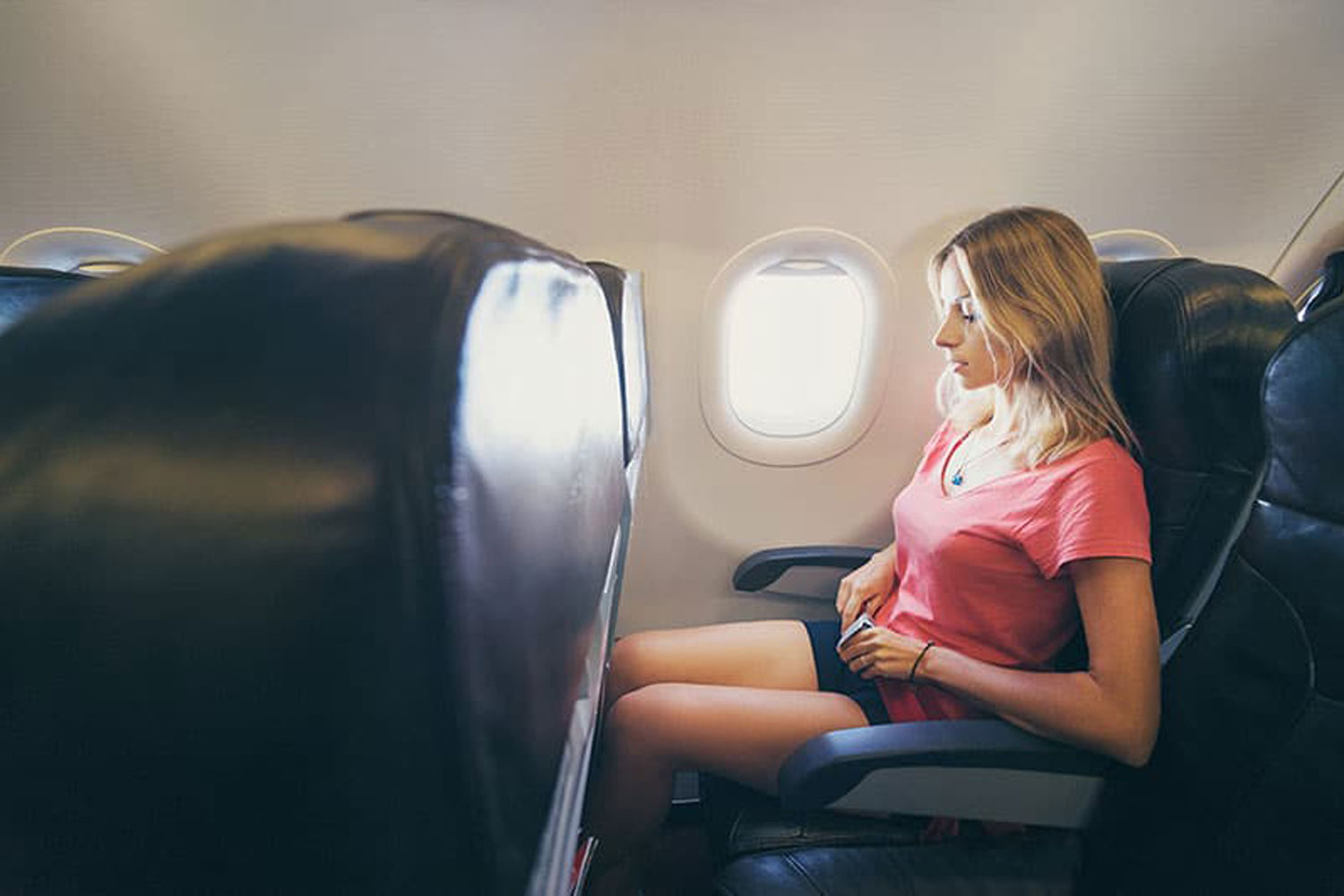
There are a lot of scary things about flying, but the window seat typically isn’t one of them.
It’s usually hot property, in fact, and the source of many an argument. While some people love to sit in it and watch the world go by, untroubled by the straddling of other passengers, others hate being stuck in it, and having to clamber over two other people every time they need the toilet. Others simply don’t care where they are sat.
But according to luxury travel hacker Michelle G, you really ought to pay more attention to where you sit. Why? Because if you like sitting in the window seat – or any seat, arguably – you should be wearing sunscreen, she claimed in a recent video (watch it below).
Why you should always wear sunscreen on a plane, according to Michelle G (@laxtoluxury)
“You should always wear sunscreen when you’re on a plane. A study found that due to the amount of UVA rays windows let in, which cause long term skin damage, an hour on a plane at normal flight altitude is equivalent to about 20 minutes in a tanning bed,” Michelle said.
She then shared three of her favourite sunscreens and said to apply them 30 minutes before a flight (then as needed throughout).
Her claims left some of her followers shocked. One wrote: “Wow. I never knew that. Thanks for the heads up.”
Another asked: “How am I supposed to do this on a 15-hour flight with a layover? Won’t I break out if I have sunscreen on my face for that long?”
Another TikTij user, @StraightToThePoints wrote: “Thinking about all the flying I’ve been doing over the last plus years. *checks skin*.”
Michelle responded to this “Imagine FAs!”
“UV rays don’t go through windows,” another user wrote. Michelle responded: “That is…patently false.”
Furthe comments on the video included: “I had no idea!” and, “This is one I’d never heard before.”
Michelle is not the first person to warn of this risk.
Dr. Sweta Rai of the British Association of Dermatologists previously told Sun Online Travel: “Pilots are at higher risk of skin cancer and sun-induced damage as they sit in bright light.”
“The windows they sit at when piloting the plane are huge and as a result, they wear sunscreen as standard. But passengers on flights should take heed and do the same.”
“The window next to you on a plane may be small, but you’re closer to the ozone layer on a flight by tens of thousands of feet.”
“The sun’s rays are much more harmful at this level and we should all be wearing sunscreen when flying. If you use a daily moisturizer with an SPF of 30 or more in it, then you don’t need to worry.”
According to the Cancer Council, however, there is no credible evidence to suggest passengers can get sunburnt on commercial airline flights.
“There is no credible evidence to suggest passengers can get sunburnt on commercial airline flights, so Cancer Council does not recommend the need for sun protection,” cancercouncil.org.au states.
“Excessive exposure to ultraviolet (UV) radiation contributes to the development of melanoma and other skin cancers. Ultraviolet rays from the sun are divided into two types: UVA and UVB. UVB, which penetrates the top layers of the skin, causes sunburn and is the major cause of skin cancer. UVA penetrates deeper into the skin causing damage to the skin collagen and elastin, resulting in premature skin ageing and can also cause skin cancer” (Cancer Council).
“A study in 2015 found that, compared with the general population, pilots and cabin crew had around twice the rate of melanoma. However, it was not clear if this was caused by exposure to UV radiation on the ground during leisure time, or in the aircraft during flight. Other factors such as repeated exposure to cosmic radiation and disruption of circadian rhythms, could also contribute to the elevated rate of cancer in airline crew. UV radiation increases with altitude and while some commercial aircraft windshields let through a small amount of UV, more modern aircraft windshields provide almost a total block.”
“Where UVA does penetrate the windshield, it may have an impact on the melanoma incidence of pilots, however more research is needed to establish this link.”
As for windows in the passenger cabin, Cancer Council says they are generally constructed of three layers of plastic: “These materials are highly effective at blocking both UVA and UVB, ensuring passengers are not at risk.”
“The majority of melanomas are the result of repeated exposure outdoors to UV radiation without the use of sun protection. Cancer Council recommends that when UV levels are 3 or above you seek shade, wear a hat that covers the head, neck and ears, wear sun protective clothing and close-fitting sunglasses, and wear an SPF30 or higher sunscreen.”
Read Next
- How To Score A $27,000 First Class Seat For $600, According To A Points Hacker
- A Beginner’s Guide To Travel Hacking: Level 2
The post ‘Equivalent To A Tanning Bed’: Window Seat Warning Shocks Passengers appeared first on DMARGE.


0 Commentaires